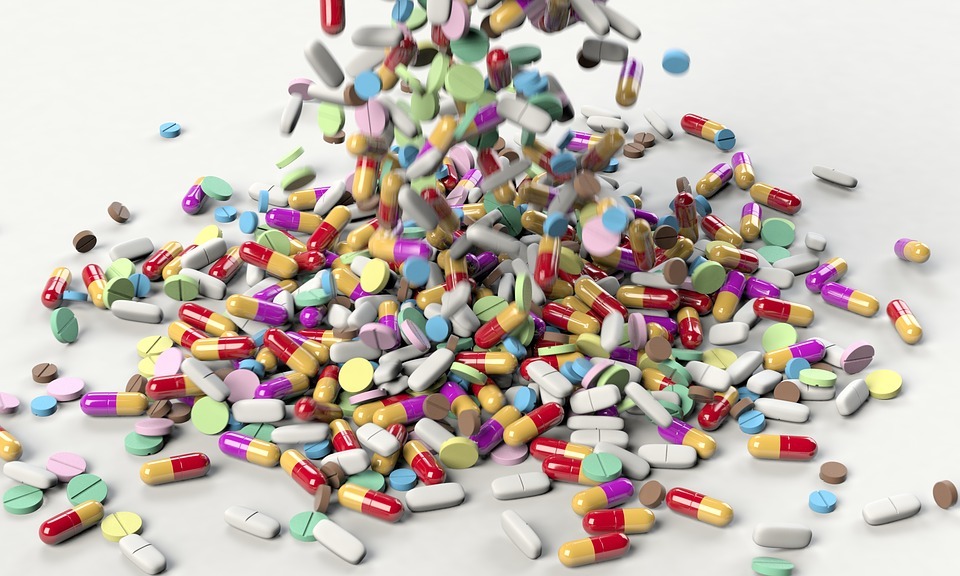Antibiotics, also known as antibacterials, are drug kinds that destroy or slow bacterial development. Alexander Fleming recognized penicillin in 1929, the first antibiotic chemical compound. Penicillins, Cephalosporins, Carbapenems, Macrolides, Aminoglycosides, Quinolones, Sulfonamides, and Tetracyclines are some of the prevalent antibiotics.
General antibiotic prescription principles are used: first-line antibiotics, reserve wide spectrum antibiotics only for circumstances stated, prescribe antibiotics for bacterial diseases if symptoms are serious or substantial. It is very important to understand each type and functions before taking them, this will avoid you from taking the medication incorrectly.
Penicillins
Penicillins are a group of antibacterial medicines which attack a broad variety of organisms. They were the first such medicines used by physicians. Penicillin discovery and manufacture have altered the face of medicine as these drugs have saved millions of lives. Penicillin class drugs operate by indirectly bursting cell walls of bacteria.
They do this by directly acting on peptidoglycans, which in bacterial cells play an important structural function. Example of Penicillin is Amoxicillin that treats infections like tonsillitis, bronchitis, pneumonia, and gonorrhea.
Cephalosporins
Cephalosporins are a large group of Acremonium mold-derived antibiotics (formerly called Cephalosporium). Cephalosporins are bactericidal and operate similarly to penicillins (kill bacteria). They bind and block enzyme activity responsible for creating peptidoglycan, an essential component of the cell wall of bacteria.
Because they are efficient against a broad spectrum of bacteria, they are called broad-spectrum antibiotics. Scientists have been improving the composition of cephalosporins since the first cephalosporin was found in 1945 to make them more efficient against a broader spectrum of bacteria.
A fresh “generation” of cephalosporins is produced each time the structure shifts. Five generations of cephalosporins have been found so far. With cef, ceph, or kef, all cephalosporins begin such as cephalexin or Keflex.
Fluoroquinolones
Fluoroquinolones are a class of authorized medicines for the treatment or prevention of certain bacterial diseases. The antibiotics of fluoroquinolone include ciprofloxacin (Cipro), gemifloxacin (Factive), levofloxacin (Levaquin) and moxifloxacin (Avelox) and ofloxacin (Floxin).
It is typically used to cure illnesses like urinary tract infections and respiratory infections. The most commonly used brand of Fluoroquinolones is Cipro. To get it at a lower price you may use cipro discount coupon.
Macrolides
One in a class of antibiotics that contains Biaxin (Clarithromycin), Zithromax (Azithromycin), Dificid (Fidaxomicin), and Erythromycin. The macrolides prevent bacterial growth and are often prescribed to treat rather common bacterial infections.
In more technical terms, the macrolides are a group of antibiotics generated by different Streptomyces strains (spore-forming bacteria that grow slowly). They behave by inhibiting the synthesis of proteins, in particular by blocking the ribosomal subunit 50S. They are antibiotics of a full spectrum.
Sulfonamides
The sulfate-related group of antibiotics used to treat bacterial infection and some fungal infections. Sulfadiazine, sulfamethizole (brand name: Thiosulfil Forte), sulfamethoxazole (Gantanol), sulfasalazine (Azulfidine), sulfisoxazole (Gantrisin), and multiple high-strength combinations of three sulfonamides are examples of sulfonamides.
By interfering with cell metabolism, sulfa medications destroy bacteria and fungi. Before penicillin, they were the wonder medicines and are still being used today. Because before being excreted, sulfa drugs focus in the urine, one of their most popular uses is to treat urinary tract infections.
Tetracyclines
A wide-spectrum antibiotic family that works against a remarkably broad range of bacteria. Tetracycline-susceptible bacteria include H. Flu (Haemophilus influenza), Streptococcus pneumonia, Mycoplasma pneumoniae, Chlamydia psittaci, Chlamydia trachomatis and Neisseria gonorrhoeae (gonorrhea cause). Tetracycline is also used to treat rocky mountain spotted fever, typhus, chancroid, cholera, brucellosis, anthrax, and syphilis.
It is used to treat Helicobacter pylori, the bacteria connected with stomach ulcers and duodenum, in conjunction with other medicines. Tetracycline may have poisonous impacts on bone growth. Therefore, during pregnancy or nursing, tetracyclines are usually not advised. When used in kids under the age of 8 years, tetracyclines can trigger teeth discoloration. Achromycin and Sumycin are brand names.
Aminoglycosides
A class of antibiotics used to treat severe bacterial diseases that either multiply very rapidly or are hard to handle. Bactericidal antibiotics are called aminoglycosides because they immediately kill bacteria.
They do this by preventing bacteria from generating proteins that are required for their survival. Because aminoglycosides are usually used to treat severe diseases, they are typically given into the body’s veins (intravenously or IV). Some aminoglycosides, however, can be taken by mouth or as drops in the ear or eye.
Takeaway
People nowadays are very fortunate to have modern antibiotics and plenty of production. Antibiotics heald a lot of people from bacterial infections that caused them so much suffering. Therefore in taking this medication, we must always follow the right dosage and finish the full course.
Not only emphasizing the importance of its existence but to make sure that it will take effect. Know more relevant information about the antibiotic you are taking in that way, and you can avoid worsening your complication. It can also help if you will talk to your doctor everything about your medical history and if you have confusion in taking this drug.
Photo by Pixabay



